Belt and Road
Your Present Location: PROGRAMS> Belt and Road-
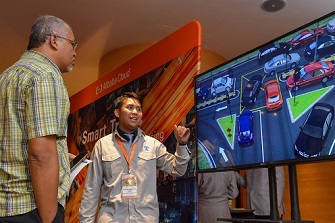
Wang Yiwei: China, ASEAN to enhance tech ties under BRI framework
Under the Belt and Road Initiative (BRI) framework, the cooperation between China and the Association of Southeast Asian Nations (ASEAN) has made great progress in infrastructure and trade. Though COVID-19 severely impacted traditional industries this year, China and the ASEAN are seeing new opportunities to accelerate cooperation on technology.
2020-08-25 -
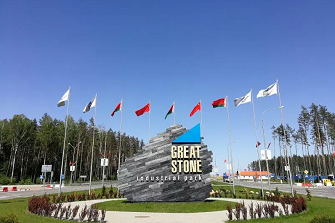
Belarus unrest ‘won’t shake BRI cooperation’ with China
The ongoing protests in Belarus, a vital traffic hub in Eurasia, will not pose threats to the country's cooperation with China, especially on projects under the Belt and Road Initiative (BRI), and companies in the key industrial park and Chinese scholars are speaking highly of bilateral relationship. An employee of The China-Belarus Great Stone Industrial Park reached by the Global Times on Monday said that most of the Chinese companies in the park were not affected by the social unrest in Belarus, and the BRI projects in the country were unlikely to be impacted in the future.
2020-08-18 -
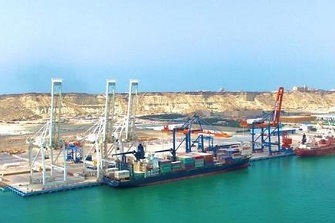
China-Pakistan Economic Corridor faces new threats from militancy
Since the multibillion dollar China-Pakistan Economic Corridor was launched in 2013, there has been cynical scrutiny of the project, arguably more so than other China-backed overseas investments. The United States has led in the criticism, cautioning that CPEC projects are neither transparent nor cost-efficient, and warning Islamabad that it is subjecting itself to expensive loans under China’s Belt and Road Initiative – through which Beijing has pledged more than US$60 billion so far.
2020-08-08 -

Zhou Rong: How to benefit from Pakistani “king of fruit” Mango
Dwindling harvests, dropping demand and export supply chains hit by the coronavirus are biting into Pakistan's mango industry, with producers of the prized fruit battling to weather a disastrous season. Across Pakistan's "mango belt" in Punjab and Sindh provinces, farmers complained a long winter and changing rain patterns have slashed production by up to half this year – just as virus shutdowns sparked border restrictions and spiraling export costs.
2020-08-07 -
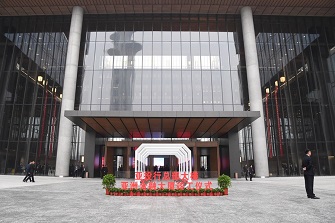
AIIB likely to engage in more areas, experts say
The Asian Infrastructure Investment Bank is expected to engage in more areas beyond infrastructure investment, in order to leverage additional funds from the private sector globally and boost the post-pandemic recovery, analysts said. Green financing and the digital economy are expected to be listed in the development goals of the AIIB, experts told China Daily on Wednesday after the conclusion of the bank's fifth annual meeting.
2020-07-31 -

AIIB meeting to boost regional cooperation amid tension
As leaders, officials and experts meet virtually on Tuesday for a meeting of the 102-member Asian Infrastructure Investment Bank (AIIB), they will likely focus on boosting regional and global cooperation, and highlighting the urgency to stand up to a rising tide of anti-globalization amid profound challenges posed by the COVID-19 pandemic, Chinese experts said on Monday. The meeting also comes as the US increasingly seeks to stir up tension in Asia and beyond. In a speech scheduled for the annual meeting of the China-initiated multilateral investment bank, Chinese President Xi Jinping will also likely reiterate China's unwavering support for inclusive global cooperation and encapsulate China's long-standing guiding principle for foreign policy that is based on mutual respect and benefit, in stark contrast to the US' ideologically driven and inward-looking approach defined by its recent relentless attacks on China, experts noted.
2020-07-29 -
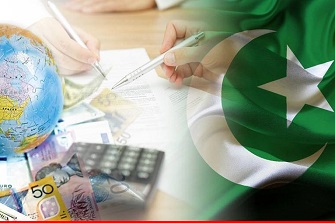
Pakistan’s FDI gets a major boost with $855 Million Chinese Investment in 2020.
Foreign Direct Investment in Pakistan is seeing an uphill trend this year and recorded a 91 percent increase. This was made possible with $855 Million Chinese Investment in various sectors primarily in the energy sector, said Professor Zhou Rong, Senior Fellow of Chongyang Institute for Financial Study of Renmin University. Professor lauded the government’s commitment to facilitate investment under Pakistan Single Window (PSW) to streamline cross-border movement of goods and regulatory bottlenecks by 2022. Moreover, he added that in order to ensure smooth business cooperation, a streamlining regulatory environment is a must.
2020-07-28 -

Zhou Rong: What do 3G, 4G services mean to far-flung areas of Pakistan?
BEIJING, July 20 (China Economic Net) - Pakistani Federal Minister for Information Technology and Telecommunication Syed Aminul Haque has announced that 3G and 4G services will be provided soon to far-flung areas of Balochistan, Khyber-Pakhtunkhwa and Gilgit-Baltistan.Right now the government of Pakistan was committed to promoting the country’s technological capacity to develop a globally competitive IT sector and industry. As the minister put it, the project would meet the objective of providing infrastructure in order to ensure access and connectivity for people, provide broadband services to the locals, improve their life standard, create job opportunities, empower women and so on.
2020-07-21 -
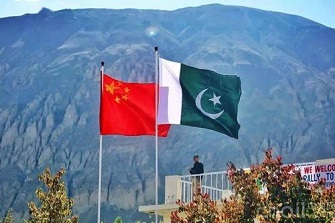
CPEC construction will not be hindered by COVID-19 pandemic: expert
The construction of the China-Pakistan Economic Corridor (CPEC) will not be decelerated but is instead progressing, a leading Chinese academic on the CPEC told the Global Times after Indian media reported that Chinese personnel working at CPEC projects lodged concerns over virus prevention and control efforts by the Pakistani government.
2020-07-21 -

Ding Gang: China, ASEAN see interconnectivity strengthen
The pandemic has had a strong impact on the Southeast Asian economy and around the world. The main export destination for China and Southeast Asian products is the US and European markets. As China has been gradually resuming economic activities, its consumption needs will help the recovery of the Southeast Asia industrial sector. For instance, China can purchase Southeast Asian products as supplements to imports from other parts of the world.
2020-03-19 -
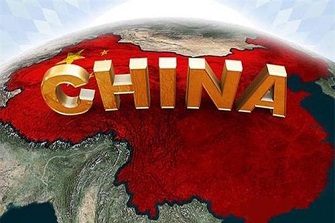
Willism Jones: There's no doubt China will bounce back from epidemic's impact
There has been a great outpouring of sympathy for China throughout the world in the wake of the sudden outbreak of the novel coronavirus pneumonia. But, at the same time, those forces in the West who have been adamantly opposed to the admission of China into the pantheon of world powers, have seen this catastrophe as an opportunity to throw new obstacles in the path of China's rise.
2020-02-13 -

Ding Gang: Why isn’t the BRI a strategy of China?
Western strategists have intentionally or unintentionally ignored the fact that China has not called the "Belt and Road" a strategy, but an initiative. One of the reasons is that the Belt and Road Initiative (BRI) is not China-centric, nor to create an alliance. BRI is a cooperative initiative targeted at development. It aims to build a platform to achieve joint development with other countries. China does not engage in building a closed circle excluding other countries.
2020-02-05 -
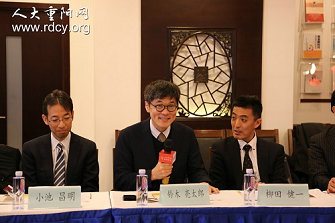
The delegation of Japanese government officials visits RDCY
On January 13, 2020, a delegation of Japanese government officials, organized by China Public Diplomacy Association, pays a visit to Chongyang Institute for Financial Studies, Renmin University of China (RDCY). The visiting delegation, led by deputy director of the Training Department of National Personnel Authority Suzuki Ryotar, consists of 16 officials from 14 Japanese government departments. The delegation members and Chinese experts have a communication on Belt and Road Initiative (BRI),Chinese economy and finance, China-Japan humanities exchange and other subjects.
2020-01-17 -
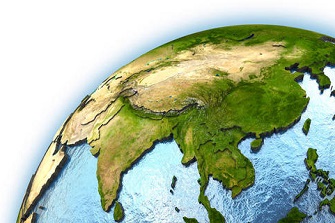
Ding Gang: Will India miss chance offered by Myanmar?
As China and Myanmar deepen relations, many Westerners believe that India's strategic room in the Indian Ocean region would be squeezed. New Delhi has a similar standpoint, thinking it should strengthen cooperation with countries in the vicinity so as to neutralize the increasing strategic presence of China in the region. Such viewpoint has influenced India's participation in the China-proposed Belt and Road Initiative (BRI), and it has actually put the two neighbors in opposite positions in a zero-sum game.
2020-01-16 -
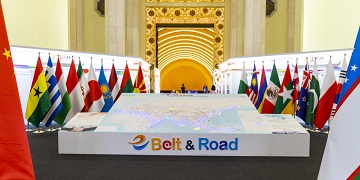
Ding Gang: Old mind-set distorts West’s view of BRI
A typical Western view of the countries engaging in the BRI is that these states are attracted to China's money. What matters is not whether the BRI is part of China's strategy, but that it can stimulate and promote the development of countries along the route. Development is the first priority. In the current globalization process, development requires cooperation as well as infrastructure construction.Why are countries along the BRI willing to approach China? This is the crux of the matter.
2020-01-09 -
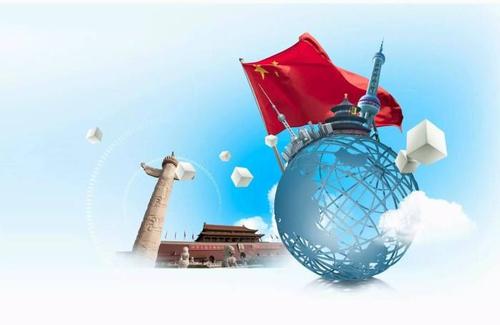
Xi makes nation's voice heard around the world
President's overseas visits bolster diplomatic efforts. Over the past year, President Xi Jinping traveled to 12 countries in Asia, Europe and South America during seven overseas trips.Under the leadership of President Xi Jinping, China remained committed to multilateralism and championed justice worldwide this year, as it strived to push forward major-country diplomacy with Chinese characteristics, according to officials and analysts.
2020-01-07 -
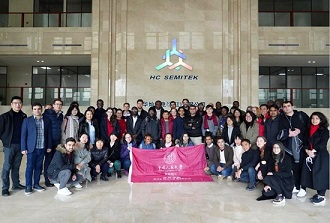
Wang Wen: Small cities offer better insight into China
After visiting Yiwu in East China's Zhejiang Province, with more than 50 international students from over 30 countries studying at the Silk Road School, Renmin University of China, I found that a tour of a small city helps foreigners understand China better. Before the visit, most of these international students could hardly imagine that Yiwu, which could not rank among the top 200 Chinese cities in terms of the population or size, is known as the world's small commodity capital. The entire city is like a mega supermarket and there is nothing one cannot buy there.
2019-12-31 -
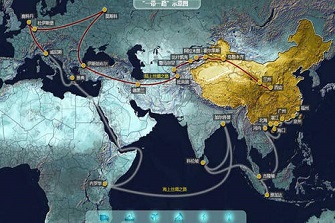
Ding Gang: BRI embodies a different modernity norm
Even Western media outlets skeptical about or even opposed to the China-proposed Belt and Road Initiative (BRI) have to admit that its progress has helped spread the country's influence - the major cause of the West's anxiety. Why is the rising influence of China bad news for the West? On the surface, they believe that through the BRI, China is spreading a way of modernization which does not conform to Western civilizational norms. In essence, they consider China unqualified to disseminate modernity around the globe.
2019-12-26 -
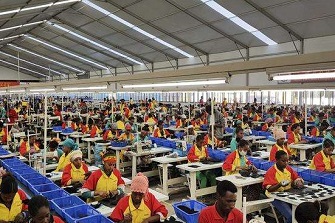
Wang Wen: Global resources key to Chinese firms
From this perspective, both Chinese companies and the Chinese government should learn to optimize the allocation of people, energy, currency, information, law, taxation, culture, institutions, think tanks and other resources, thus to maximize their profitability and benefit the local people.This process has already begun. Since 2013, the China-proposed Belt and Road Initiative (BRI) has been promoted across the world. China has signed agreements on Belt and Road construction with more than 160 countries and organizations.
2019-12-24 -

Liu Zongyi: How CPEC hurdles can be overcome
China and Pakistan are all-weather strategic cooperative partners. The two countries are forging a community with a shared future in which China-Pakistan Economic Corridor (CPEC) will play a major role. The CPEC is a major pilot project of the China-proposed Belt and Road Initiative (BRI). Yet the speed of construction of the CPEC has been slowing down recently for which there are three main reasons.
2019-12-20























































































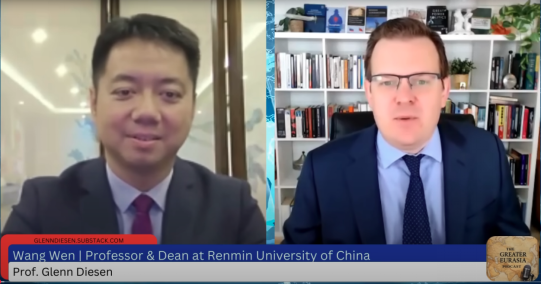
 京公网安备 11010802037854号
京公网安备 11010802037854号





